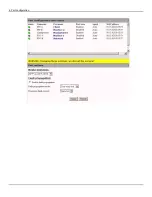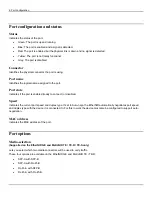
3: Management & Configuration
Management bridge
This section describes how to set up a bridged management port using the command line interface.
A minimum of two EtherNIDs are required for this setup. An out-of-band EtherNID management port will be used to
manage the other EtherNIDs, in-band through a bridged interface. This is useful when the core transport devices do not
need to be connected to the internal private management network. Instead, the first EtherNID is connected to the private
network and manages the other EtherNIDs in-band through its out-of-band Management port. The following diagram
describes the typical setup scenario for a bridged interface:
Configuration procedure
1. Power on EtherNID #1 with factory default settings.
2. Connect your computer to serial port on the back of the EtherNID.
3. Open a terminal emulation session with the following configuration:
Bits per second: 115200
Data bits: 8
Parity: None Stop bits: 1
Flow Control: None
4. Login to the CLI with username admin and password admin.
5. If an EtherNID GE is being used, and the setup requires the Client and Network ports to be set as copper
medium, type the following command:
media-selection select RJ45-A_RJ45-B
Summary of Contents for EtherNID EE
Page 8: ...8 Alarms 199 1 APPENDIX B MIB SUPPORT 203 Public MIBs 203 Private MIBs 205...
Page 71: ...4 Port configuration...
Page 121: ...6 Alarms Alarm configuration The Alarm Configuration page lists all defined alarms...
Page 164: ...9 Performance Assurance Agent 3 Configure parameters and click Apply...
Page 191: ...11 CFM 10 Open the CFM DMM Configuration and select add...
















































